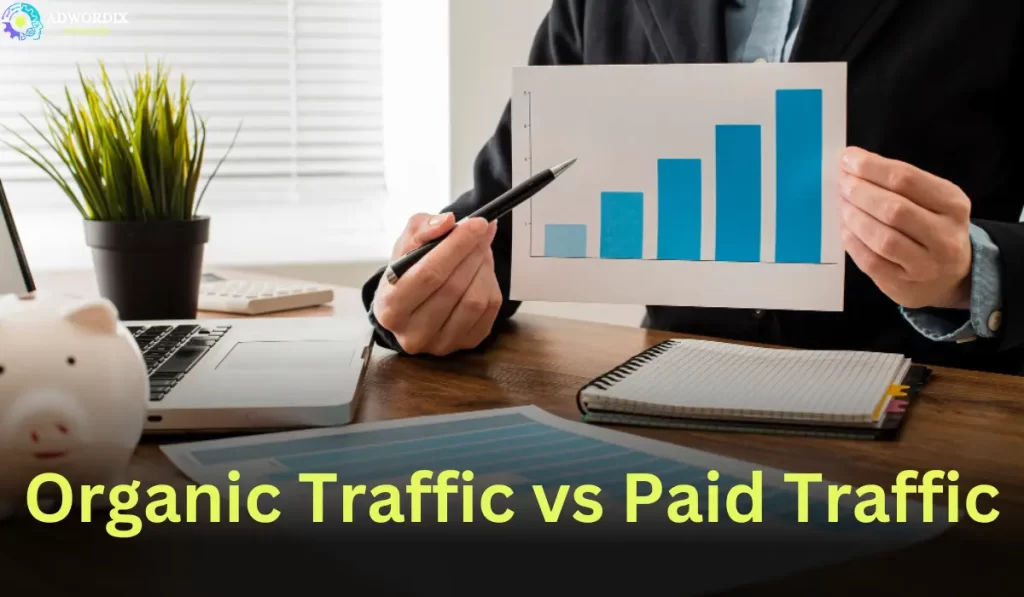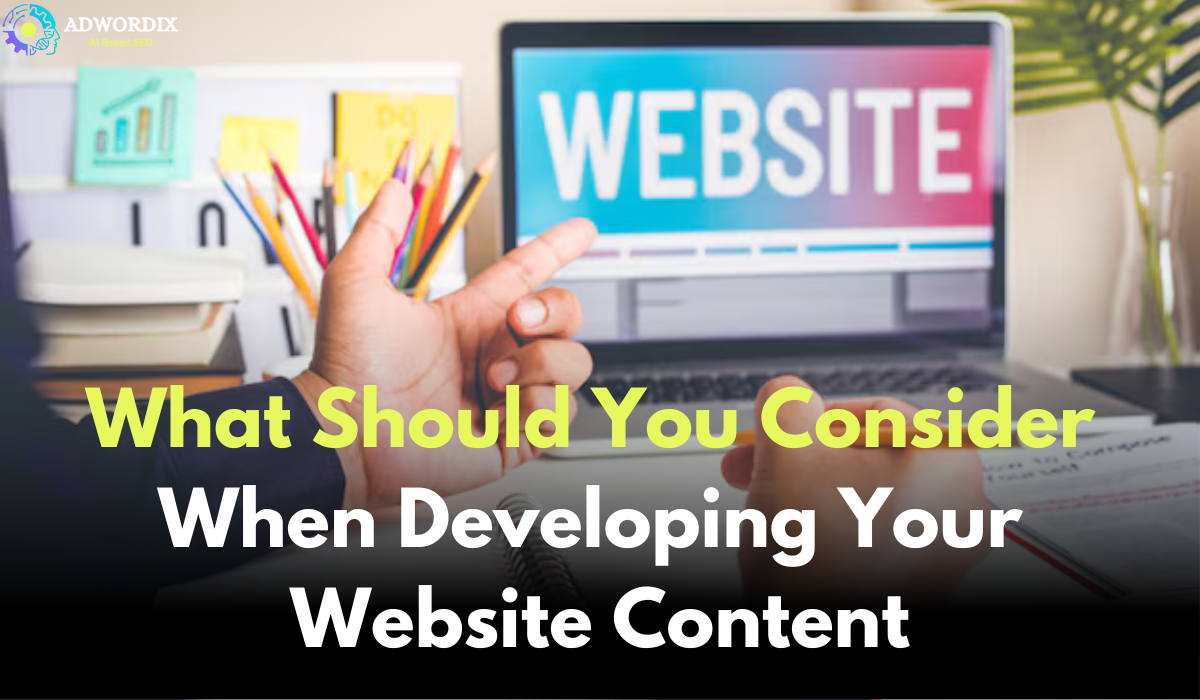
In digital marketing, traffic generation is pivotal for any website’s success. The two primary categories of traffic are sponsored and organic. Understanding the distinctions between paid and organic traffic is essential to maximizing internet visibility. This piece will examine the specifics of both traffic types, explore their benefits and drawbacks, and provide strategies to maximize their potential. By grasping these concepts, businesses can develop a balanced approach to attract visitors, enhance user engagement, and encourage conversions, eventually resulting in a robust and competitive online presence.
Organic Traffic
Organic traffic refers to users who discover your website through organic search results. These visitors typically find your site via search engines like Google, Bing, or Yahoo. Organic traffic is driven by your website’s relevance to the search terms users enter. Because users are actively looking for content related to yours, this kind of traffic is valued more because of the search intent behind the query. Increase your exposure and organic traffic by optimizing your website for search engine results. Over time, this may result in higher engagement and conversion rates.
Benefits of Organic Traffic
- Cost-Effective: Organic traffic is free, meaning you don’t pay for each visit. This makes it an attractive option for businesses with limited marketing budgets.
- Targeted: Visitors are usually highly relevant as they actively search for information related to your site. This relevance boosts the probability of conversions and customer loyalty.
- Long-Term: Once established, organic traffic can provide consistent long-term results without ongoing costs. Unlike paid traffic, which ceases when you stop paying for ads, organic traffic can continue to flow as long as your site maintains its search engine rankings and relevance.
Drawbacks of Organic Traffic
- High Competition: Achieving high rankings can be challenging due to competition. There is competition among businesses to be the ones that appear on search engine result pages (SERPs), making it difficult to stand out.
- Time-Consuming: Increasing organic traffic requires work and patience, often requiring months of consistent SEO and content marketing work. The process of optimizing your website, creating high-quality content, and earning backlinks can be slow, but the long-term benefits are worth the investment.
How to Increase Organic Traffic
- SEO (Search Engine Optimization): Ensure that your site is responsive, uses relevant keywords, and loads quickly to optimize it for search engines. Regularly updating your content and using metadata effectively can also boost your rankings.
- Content Marketing: Create high-quality, valuable content that addresses your audience’s needs and questions. Blogging, infographics, videos, and other content forms can attract and engage visitors, encouraging them to return and share your site with others.
- Link Building: Get backlinks from reputable sites to enhance your site’s authority and improve search rankings. Guest posting, influencer outreach, and partnerships with others can help you develop a solid backlink profile, which is important for SEO success.
Paid Traffic
Paid traffic, conversely, comes from visitors who click on ads you have paid for. On social media sites, search engines, and other platforms, advertisements may be on other websites. Google Ads and social media advertising are standard methods of generating paid traffic. Unlike organic traffic, paid traffic is immediate and is capable of reaching particular populations, interests, and behaviors. By investing in paid advertising, businesses can quickly drive traffic to their sites and achieve particular advertising objectives like sales or lead generation in a shorter timeframe.
Benefits of Paid Traffic
- Fast Results: Once your ads go live, paid traffic can be generated almost immediately. This rapid response is beneficial for time-sensitive campaigns, product launches, or when immediate visibility is required.
- Highly Targeted: Advertisements may be tailored to particular populations, interests, and behaviors. This level of customization allows you to reach your ideal audience more effectively, boosting conversion rates and optimizing your investment’s return.
- Measurable: Paid campaigns provide detailed metrics, allowing for precise performance tracking and adjustments. Tracking key performance indicators (KPIs) like click-through rates (CTR), conversion rates, and return on ad spend (ROAS) can help you make your campaigns more effective.
Drawbacks of Paid Traffic
- Cost: Paid traffic can be expensive, especially in competitive industries. The cost-per-click (CPC) for highly sought-after keywords or target audiences can quickly add up, straining marketing budgets.
- Short-term: Traffic stops when you stop paying for ads. Unlike organic traffic, which can continue flowing over time, paid traffic requires continuous investment. This dependency on budget allocations can be a drawback for businesses with fluctuating resources.
- Competition: High competition can drive up ad costs and make it harder to achieve a positive ROI. Competing for ad space on popular platforms like Google and Facebook can be challenging, especially for smaller businesses with limited budgets.
How to Maximize Paid Traffic
- Google Ads: Utilize Google Ads to target users based on search queries, ensuring your ads appear to those actively seeking your services. Ad extensions, remarketing, and A/B testing can enhance the effectiveness of your campaigns.
- Social Media Ads: Leverage platforms like Facebook, Instagram, and LinkedIn to reach a broader audience based on their interests and behaviors. Custom audiences, lookalike audiences, and dynamic ads can aid you in tailoring your campaigns for maximum impact.
- Landing Pages: Design effective landing pages to convert ad clicks into leads or sales, optimizing the user experience and call-to-action elements. A well-crafted landing page with clear messaging, compelling visuals, and an easy-to-navigate layout can significantly improve your conversion rates.
Comparison of Organic and Paid Traffic
Organic Traffic Pros
- It is free and cost-effective, making it accessible for businesses with limited budgets.
- Results that are long-lasting and sustainable enough to generate traffic over time.
- Establishes credibility and trust with users because authority and dependability are frequently linked to high search ranks.
Organic Traffic Cons
- It requires time and effort to achieve and maintain high rankings.
- High competition for top search rankings can make standing out in crowded markets challenging.
Paid Traffic Pros
- Immediate traffic boost providing quick visibility and results.
- Highly targeted and customizable, allowing for precise audience targeting based on demographics, interests, and behaviors.
- Easily measurable and adjustable with detailed metrics enabling performance tracking and campaign optimization.
Paid Traffic Cons
- It can be expensive, particularly in competitive industries with high cost-per-click (CPC) rates.
- Traffic stops when payments cease, requiring continuous investment to maintain.
- High competition for ad space can drive up costs and make it harder to achieve a positive ROI.
When to Use Each
- Organic Traffic: Best for long-term growth, building authority, and when budget constraints are a concern. It is ideal for businesses looking to establish a strong, sustainable online presence and attract a loyal audience over time.
- Paid Traffic: Ideal for short-term campaigns, launching new products, and when quick results are needed. Suitable for businesses aiming to achieve immediate visibility, drive targeted traffic, and meet specific marketing objectives in a shorter timeframe.
How to Combine Both for Maximum Results
Integrating organic and paid traffic strategies is essential to maximizing your online presence. Use paid traffic to drive immediate visits and conversions while investing in an organic strategy to build a sustainable traffic source. This dual approach ensures that your website can reap the benefits of both methods, providing both short-term boosts and long-term growth. By balancing the strengths of each, you can create a comprehensive traffic generation strategy that adapts to changing market conditions and achieves consistent, high-quality results.
Conclusion
Knowing the differences between organic traffic and paid traffic is vital for any online business aiming to optimize its presence. While SEO service offers organic traffic for long-term, cost-effective results, building it requires time and effort. Paid traffic provides quick, targeted results but at a financial cost. By leveraging both strategies, businesses can achieve a balanced, practical approach to traffic generation, ensuring sustainable growth and immediate impact.
A comprehensive traffic generation strategy should include organic and paid tactics. This balanced approach maximizes visibility and reach and guarantees that your web presence stays durable and adaptable to changing market dynamics. Embracing the strengths of each traffic type will make it possible for your website to create a synergistic strategy that drives continuous engagement, growth, and profitability by understanding and effectively utilizing organic and paid traffic.




